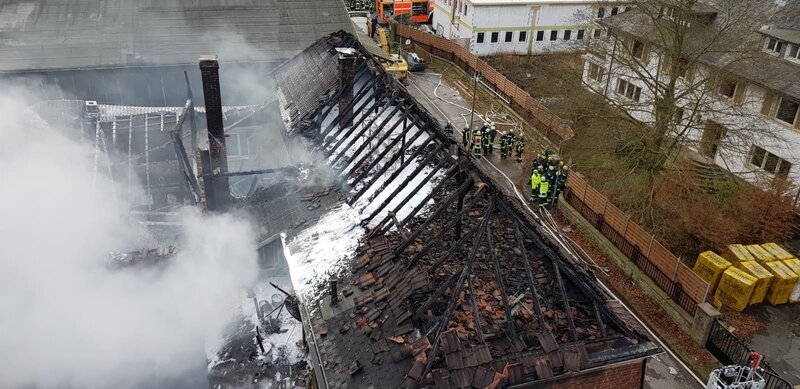The history of pinball is a chaotic one. Several crises have shaken the industry and jeopardized its very existence. Not only has the market been threatened several times, but the machines themselves have suffered during these periods.
The question arises: how many pinball machines are left from previous decades? We’ll be focusing on machines from the 90s, the period for which we have reliable data.
Sommaire
Periods when pinball machines were destroyed
We can identify 3 periods when pinball machines were scrapped, all in a different context.
Pinball prohibition in the USA
From the 1940s until 1976, pinball was banned in several North American states. Considered a game of chance by the authorities, it was banned in the same way as slot machines. The aim was to reduce organized crime’s sources of revenue.
It wasn’t until Roger Sharpe’s demonstration that the New York City Council recognized that it was now a game of skill rather than chance.
In the meantime, the authorities had destroyed mountains of mechanical and electromechanical machines, using shock images.



The 1983 video game crisis
1983 saw the start of the greatest crisis the video game industry has ever known. Flooded by hundreds of uninspired copies of the famous games Pong, Pac-Man and Space Invaders, the market collapses under the weight of tons of uninteresting games. They’re taking a heavy toll on gamers’ confidence.
Pinball machines pays the price, sharing the same public spaces as arcade machines. Manufacturers are closing down. While the destruction of machines is not as flagrant during this crash as in others, it is hardly questionable.
The pinball collapse from 1999 onwards
For the current generation of pinball players, the late 90s and early 2000s are still fresh in the memory.
Societal changes take root just a few years earlier, and videogame-playing become increasingly focused on home consoles. Little by little, arcades close, reducing demand for machines.
The phenomenon also affects bars and pubs, which preferr to reclaim the square meters occupied by pinball machines for the consumption of drinks. In concrete terms, it’s more profitable to have 2 tables to seat customers than one pinball machine.
Not enough pinball takers
A collapsing market doesn’t necessarily mean that products are disappearing from the second-hand market. So why were the machines from the 90s destroyed? There are several reasons:
- Some operators went out of business, leaving the machines with bar or gaming hall managers. The latter, not knowing what to do with the machines, simply threw them away, when it wasn’t the operator himself who did it.
- There were, of course, those who took over the machines and bought them back at a good price. But there weren’t enough of them to repatriate them all.
- The private market was in its infancy. It would take around 10 years for it to become structured and be able to absorb significant quantities.
- Arcades were an ideal place to launder dirty money, since they only handled coins. Some villainous proprietors didn’t hesitate to set fire to their premises, with all the machines inside, to collect the insurance money.


Losses and the passage of time
Added to all these crises is the natural wear and tear of an electronic device. Components corrode. Add to this the fact that the object is bulky, and you find it boned up in barns with a pothole on top. Floods and fires have also taken their toll on machines.


In fact, it’s surprising that there are still so many pinball machines over thirty years old today. Proportionally, there aren’t as many computers left from that era! But there’s a reason for this:
- Unlike a PC, a pinball machine doesn’t really “go out of date”. The pleasure of the game remains intact, whatever the age of the machine.
- Pinball machines were designed to be robust, and so were their components. This simplicity has always given them a high repairability index. Just like old classic cars.
- An international community has sprung up, aided by the rise of the Internet. It has made it possible to preserve machines by sharing knowledge about their care and maintenance. So much so, in fact, that today’s Pinheads laugh at the “wildcat” repairs carried out by inconsiderate operators in the 90s! (paper clips, chewing gum, rubber bands…)
Estimating the number of lost pinball machines
OK, we now have the shared certainty that a proportion of the pinball machines produced over the years have indeed disappeared. But what percentage are we talking about?




Zex’s algorithm
Zex is a Pinball Mag. reader/listener/spectator who contacted us to share his original approach to pinball. He is a financial analyst by profession. His job is to study markets in order to advise his clients on their investments. These analyses are based in particular on statistical models designed to explain or predict what public data do not clearly show.
A pinball enthusiast, he has applied his expertise to the pinball market. One of the models he has built enables him to estimate the number of machines in circulation, by theme. This model is used to estimate volumes currently produced, as the information has not been public since 2013. Stern Pinball and its competitors are getting secretive 🙂
How does the model work?
To create a model, you need a usable dataset. In this case, Zex has established a model that extrapolates volume in circulation based on the number of registrants on the pinside website who claim to own the pinball machine in question.
IDPB (Internet Pinball Database) provides the number of pinball machines produced, at least up to 2013. Zex was thus able to test and improve its model, verifying that its extrapolation from pinside coincided with the figures provided by IPDB.
We’ll spare you the details, as the algorithm is quite refined. Many other parameters are taken into account, such as year of production, number of reviews, name, etc.


The 90s aberration
While this model works relatively well for machines from the 2000s onwards, it becomes less and less relevant as we go back in time. The aim is therefore to understand the missing parameter that explains the discrepancies. Or parameters, as the causes can be multiple.
Without a doubt, machine destruction is THE main variable missing from Zex’s model. But then, taking the problem in the other direction, it’s possible to estimate the proportion of machines destroyed on older pinball machines! All you have to do is compare the volume given by the model with the production volume.
Pinball machine destruction: the chilling figures
Let’s take the example of the best-selling pinball machine of all time: The Addams Family. From 1992 onwards, 20,270 copies were produced (not counting the GOLD version). Every arcade had at least one copy.
Zex’s model is indisputable: even if we are very cautious, i.e. if we take the low range of lost volumes estimated by the algorithm, around two-thirds of The Addams Family pinball machines would have been destroyed, thrown away or scrapped!
Let’s take these figures with a grain of salt, as orders of magnitude rather than exact values. Let’s take a look at a few iconic machines:
- For Twilight Zone, a large half would have disappeared.
- For the Indiana Jones pinball machine, 2/3 would be definitively lost.
- Theatre of Magic fares better, with a loss of 40%.
Fewer disappearances for pinball machines in the late 90s
In the second half of the 90s, pinball machine production volumes dropped dramatically. Where it used to be common to exceed 10,000 units per model, the best hits were barely above 5,000.
Loss rates are lower for machines produced at the end of the golden age. Zex assumes that the low volume of these tables enabled the nascent resale market to absorb the quantities. Let’s take a look at a few titles from the end of this era:
- 15% of Cirqus Voltaire pinball machines were scrapped
- 10-20% of Medieval Madness
- 15-20% of Monster Bash
- 5-10% of Attack From Mars
It should be noted that for the last three, the statistics may be a little optimistic as to the conservation of the machine park. It’s possible that the owners of the remake versions by Chicago Gaming have incorrectly referenced their products on pinside.
If we put all these figures together, we can safely come to the following conclusion:
Half the pinball machines of the 90s would have been destroyed.
That’s sad, isn’t it?
And what’s tomorrow’s trend?
For any pinball enthusiast, this observation makes you want to shed a tear or two. But can we expect our latest Godzilla pinball machines to fare any better?
Not easy to predict, here are a few factors that may influence the fate of our favorite machines:
- Pinball is less and less perceived as a “cheap” pastime, and rightly so. So the object itself is considered rare, and its image is gaining in positive connotation.
- Since most pinball machines are now owned by private individuals, it’s possible that the monetary and heritage value of a pinball machine will encourage families to keep or sell them, rather than throw them away.
- Pinball machine spare parts have little value these days. Computer components wouldn’t run a big Excel file… Unless metals become rare enough to be melted down for resale, a pinball machine is worth more than the sum of its parts.
- There remains the threat of a new market crisis, which would change the appreciation of customers who are now snapping them up. But we’re still a long way from 1983-style saturation.
The pinball sector is certainly exciting! This article is the first in a series that will transcribe what Zex has learned. To be continued 🙂
